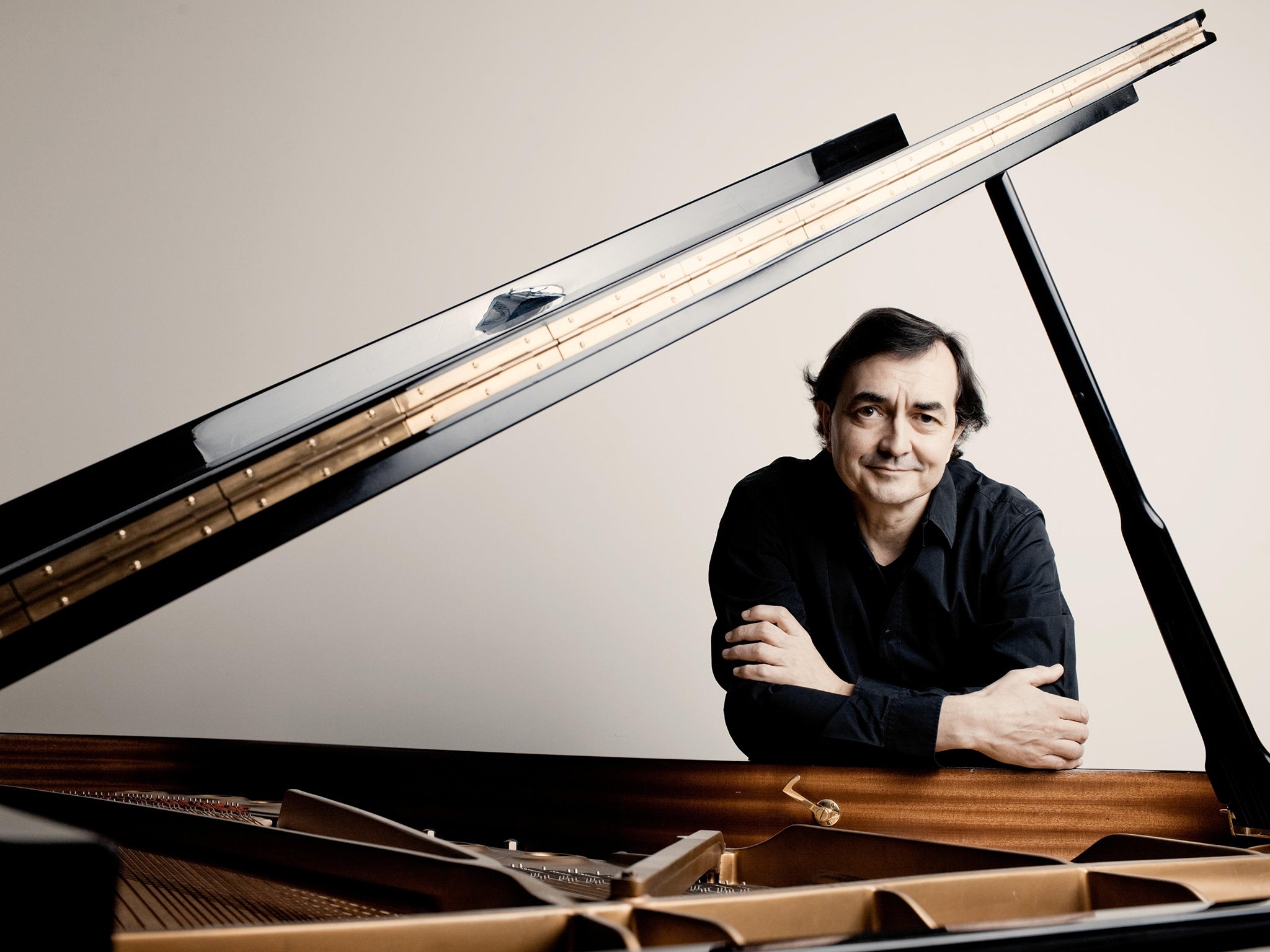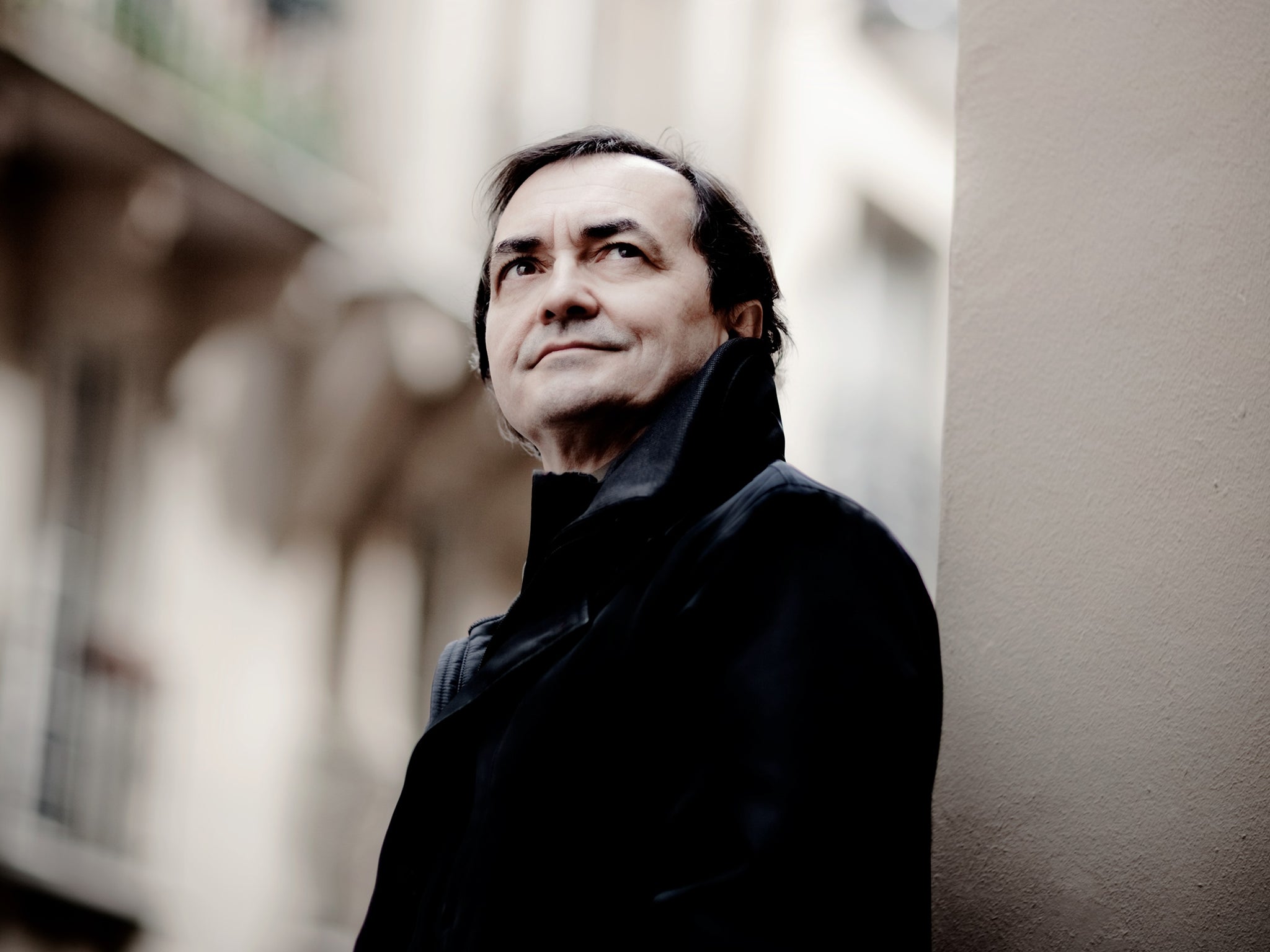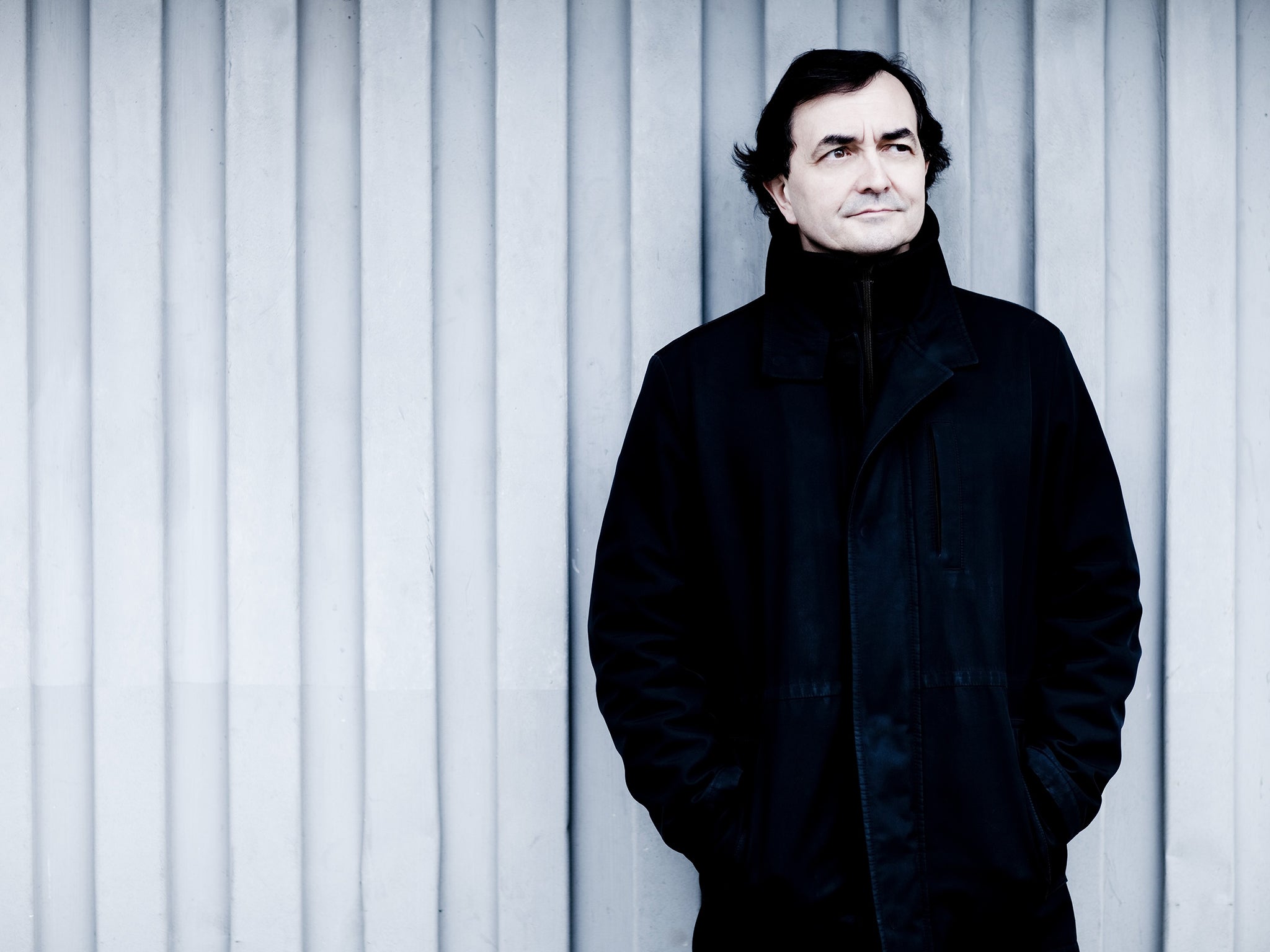Pierre-Laurent Aimard interview on bringing György Ligeti's work to life
'Ligeti was extreme, his compositions are extreme, and we have to be extreme'

Where to begin with Pierre-Laurent Aimard? No other pianist comes near this mercurial 58-year-old Frenchman, either in terms of musical versatility or sheer, scattergun productivity.
Among other activities this summer, he’s following up this coming Thursday’s performance of Messiaen’s Turangalila Symphony at the Royal Festival Hall with his usual blizzard of concerts at the Aldeburgh Festival, of which he has for six years been the artistic director. Meanwhile, on Wednesday, in tandem with Germany’s Ruhr Piano Festival, he’s launching the English version of an interactive online project through which the extraordinary piano music of Gyorgy Ligeti will be brought to a new and much wider audience.
Aimard was a one-off from the start. “I was never a Wunderkind,” he insists, with the eager simplicity that marks all his utterances, but that is how he must always have come across. He was a precocious infant pianist, and when his parents – both doctors with an experimental cast of mind – sent him to an equally experimental teacher, his musical horizons were set wide: the result was that he felt as at home with the 20th century as with Baroque, and was playing Schoenberg at eight. “I was passionately curious about his music,” he says. “And I loved new music on the page – I read it as I read novels. All my pocket money went on scores – first it was Beethoven’s string quartets, then Boulez’s Second Sonata, then a succession of increasingly complex works.”

Olivier Messiaen and his pianist wife, Yvonne Loriod, made him their “adoptive son” when he was 12, Pierre Boulez installed him as house-pianist to the Ensemble InterContemporain when he was 19, and Alfred Brendel saw in him his alter ego – they both have the same quizzical, sad-clown grin – and roped him in as co-performer of his poetry-with-pianism shows. Meanwhile, Ligeti singled him out as the ideal exponent of his horrendously difficult music.
“Ligeti can be terrible to his interpreters,” Aimard once told me of the composer, who died in 2006. “If he thinks they have played his music badly, he explains exactly why, and tells them to play it no more. He once came on stage at the end of a concert and told me to play a particular study again, because I hadn’t played it fast enough – yet it was already almost impossibly fast.” Moments like that, he added with shining eyes, were “fantastically enriching”.
But Aimard can himself be a bit of a sadist, as was seen in the 2009 documentary Pianomania where, preparing to record some Bach, he commissioned the construction of a piano which could combine the intimate effect of a clavichord with the deep sonority of an organ and blaze of a Steinway. We watched his chief mechanic Stefan Knupfer – a prince among piano technicians – looking increasingly hunted as he tried to square this circle by spending a month preparing one piano, then a month preparing another, and then being told to put them on the stage side by side for comparison, with Aimard seeming more and more like the Princess and the Pea in his sensitivity to every aural nuance. “Let’s say he’s just – specialised,” said Knupfer loyally, through gritted teeth. Aimard’s eminent tutor, Maria Curcio, corroborated this, attributing his pianistic genius to the combination of his “profound musicality, and his very special brain”, and to his ability to read the most complex score as though it were a mere sonatina.

Asked how he approaches rebarbative music of Ligeti’s sort, he gives an oblique reply: “It’s actually less difficult than Bach. You have to take a lot of time to learn Ligeti’s language, but once you can speak it, it’s so obvious.” Then, pressed further: “I look at the whole score in silence. My first goal is to catch the whole form, and to find the right body response – not just the response of the ear and the brain. I don’t at first hear individual notes, which are merely the surface. They wait till later.”
For the past eight years, Aimard and the Ruhr Piano Festival’s Tobias Bleek have been developing a project designed both to help professional pianists deal with the challenges of Ligeti’s music, and demystify it for lay listeners: in their view, it embodies the quintessence of musical modernism. On the website we see Aimard filmed from three angles, and we can control the way the score moves, with each bar shaded blue as it is played.
The initial stage of the project focuses on two pieces of music: Musica Ricercata No 1, and Etude 13, known as “L’escalier du diable” – the Devil’s Staircase. The first – strongly influenced by Bartok and Stravinsky – contains only two tones plus their octave transpositions, but requires a lot more virtuosity than it might seem at first glance.

Watch Apple TV+ free for 7 day
New subscribers only. £9.99/mo. after free trial. Plan auto-renews until cancelled.
ADVERTISEMENT. If you sign up to this service we will earn commission. This revenue helps to fund journalism across The Independent.

Watch Apple TV+ free for 7 day
New subscribers only. £9.99/mo. after free trial. Plan auto-renews until cancelled.
ADVERTISEMENT. If you sign up to this service we will earn commission. This revenue helps to fund journalism across The Independent.
Aimard also provides illuminating commentaries on the pieces, including an account of how the “Devil’s Staircase” was conceived as Ligeti found himself pedalling uphill during a violent storm. “The wish of Ligeti was to feel this immense effort, to feel the useless effort, the effort in vain. And he really wants the interpreter to share with the listener his own fight in trying to play it. Ligeti was extreme, his compositions are extreme, and we have to be extreme.”
The warp and weft of this second piece’s rhythmical asymmetries is demonstrated by Aimard with brilliant clarity: “He wants to create a rhythmical anxiety. And at the end of this infernal process, he asks us to play at ffffffff. This is not just to play twice or three times louder, as at the end of a Brahms concerto, it is an invitation to use a sound that will not be seen as beautiful in the traditional acoustic sense.” A sound, he stresses, that seems distorted. “It is also an invitation to find a way for the interpreter to go beyond his own borders,” in a collapse which should express the cataclysm at the end of this extraordinary work. “This piece is almost unbearable to play, and it should feel unbearable.”
Pierre-Laurent Aimard plays Messiaen’s ‘Turangalila Symphony’ at the Royal Festival Hall on Thurs; his Aldeburgh Festival performances begin 13 June. Find the Ligeti Project at explorethescore.org
Join our commenting forum
Join thought-provoking conversations, follow other Independent readers and see their replies
Comments